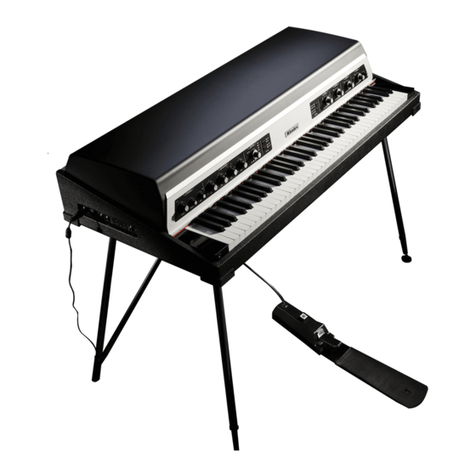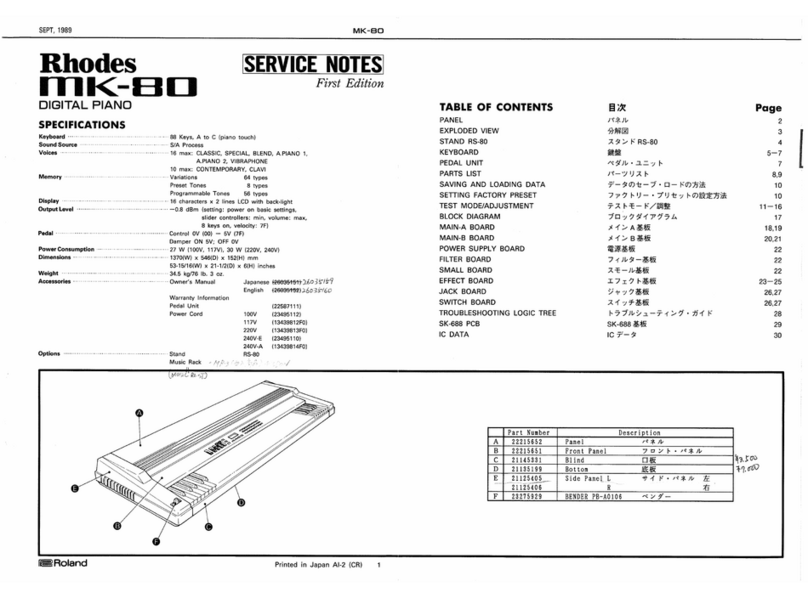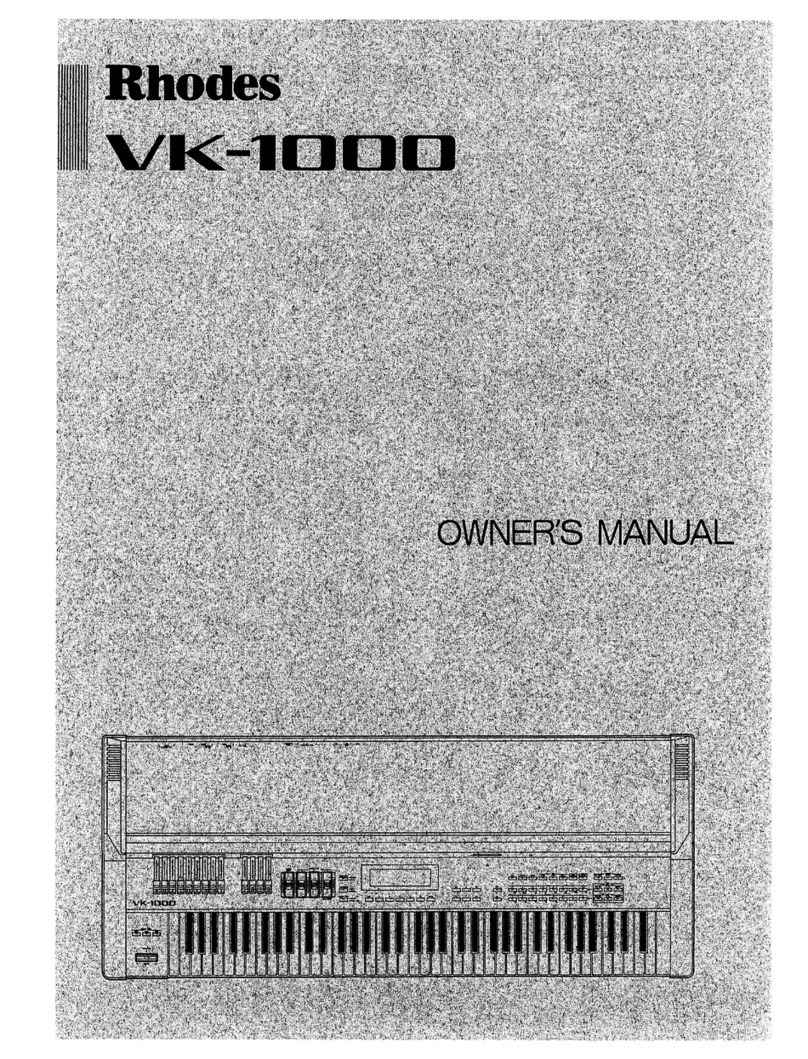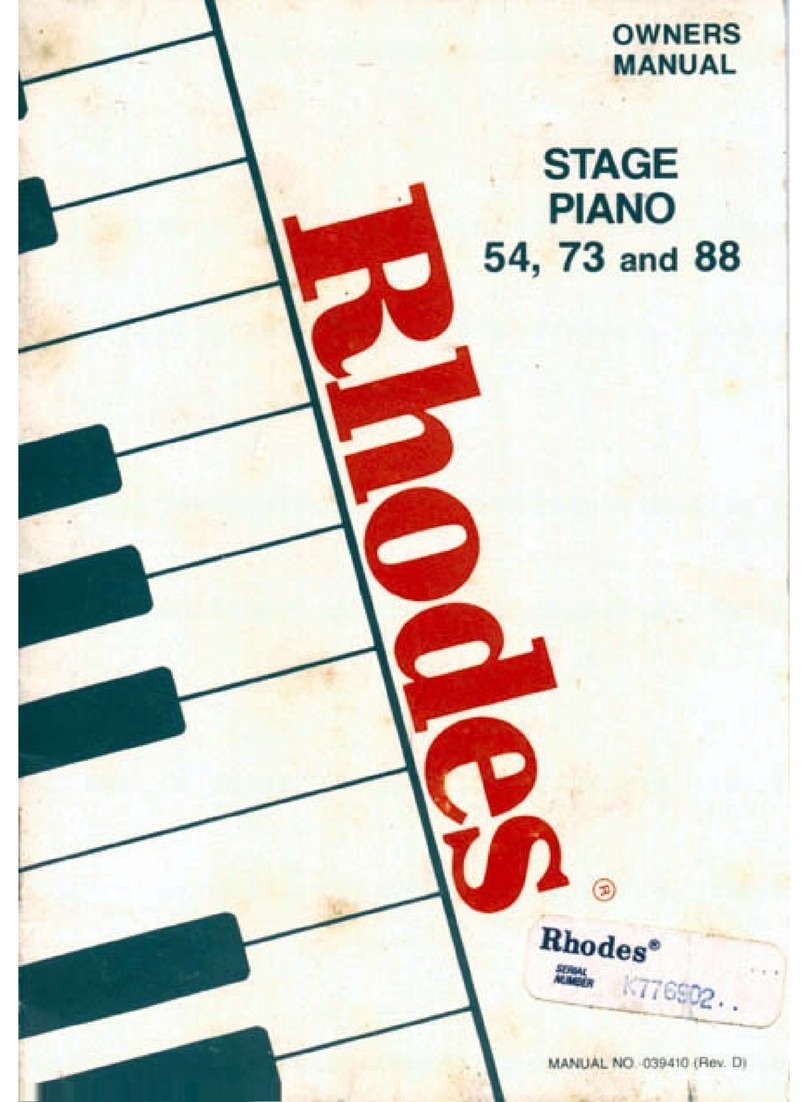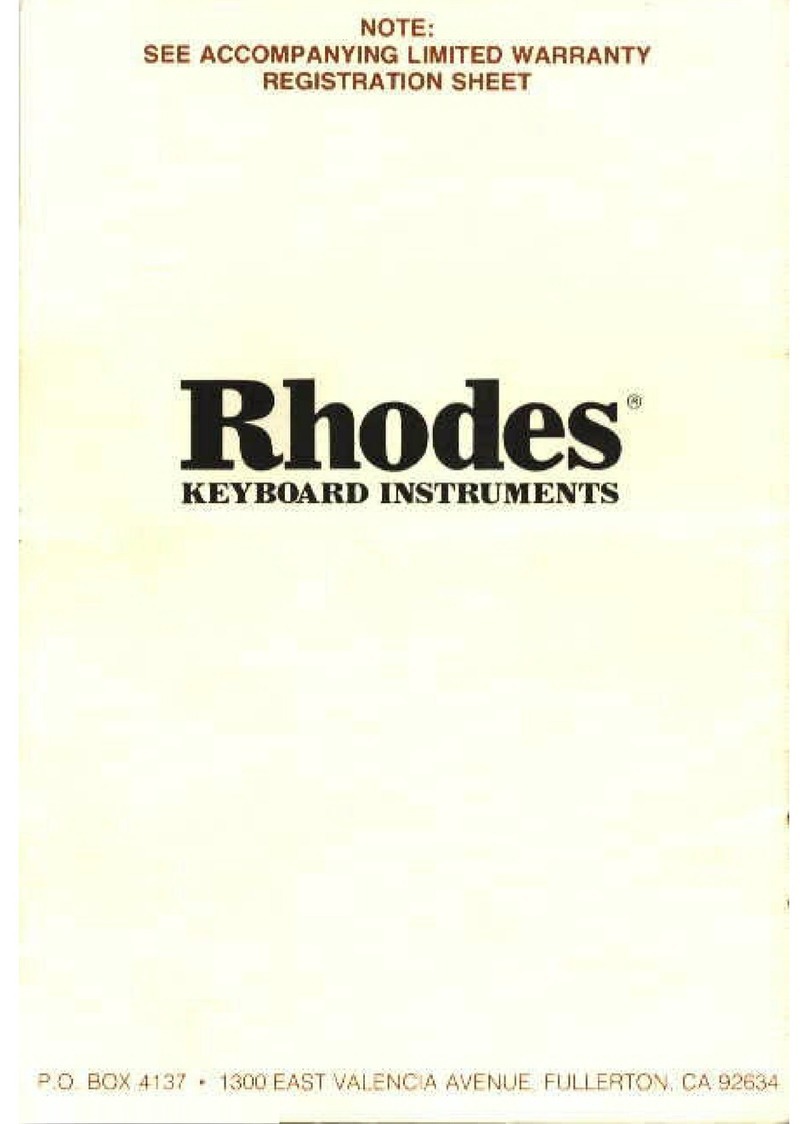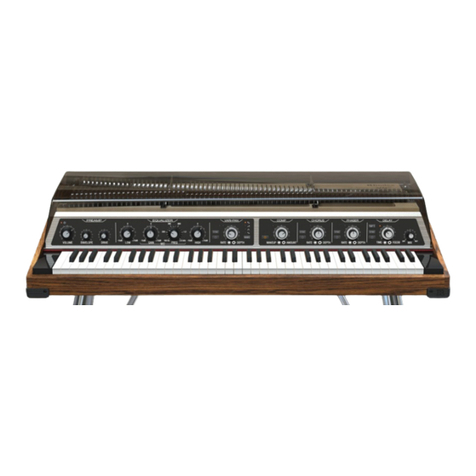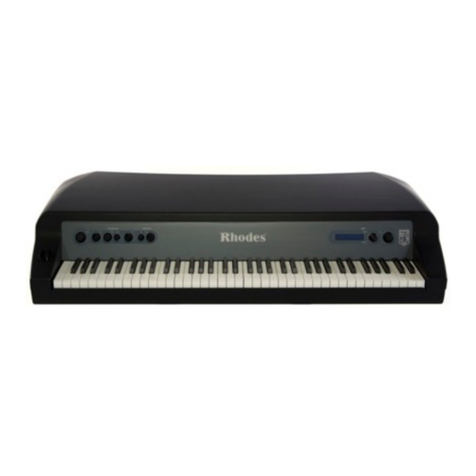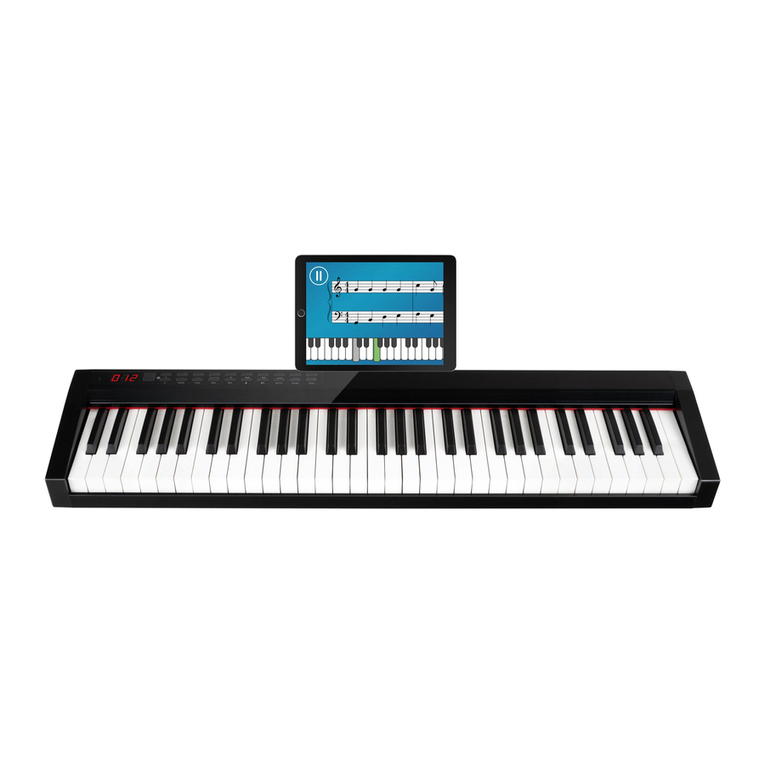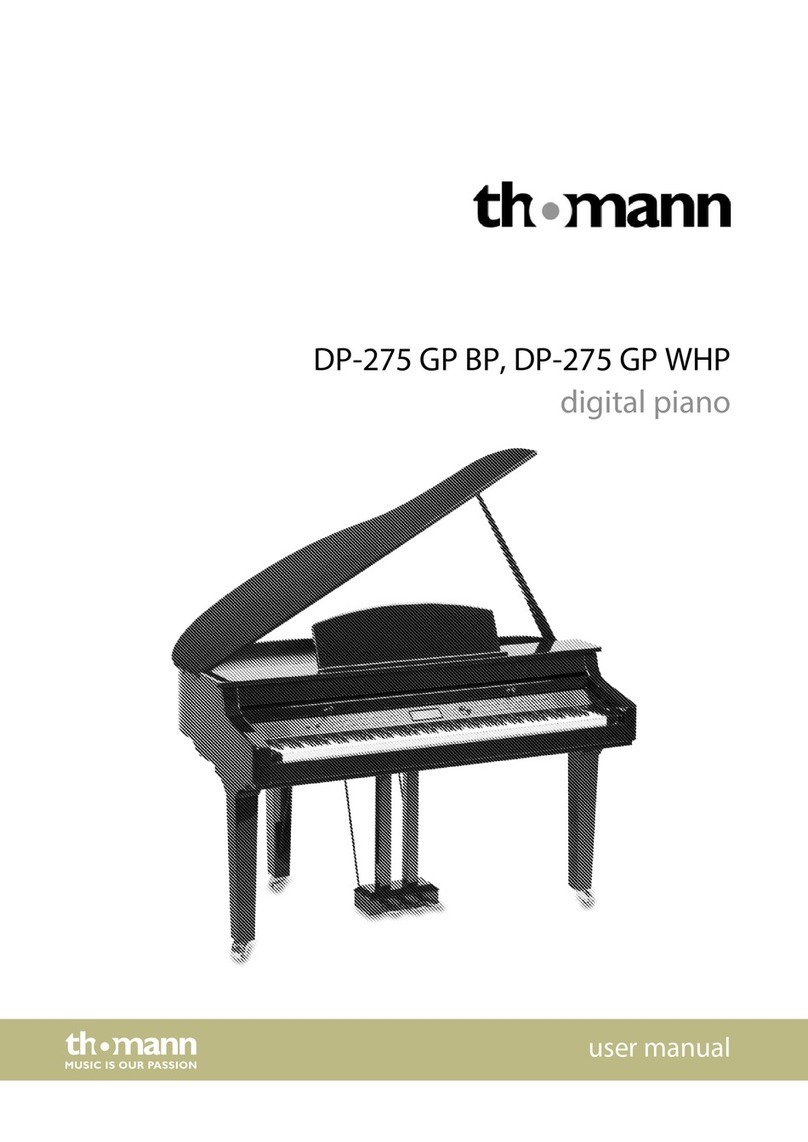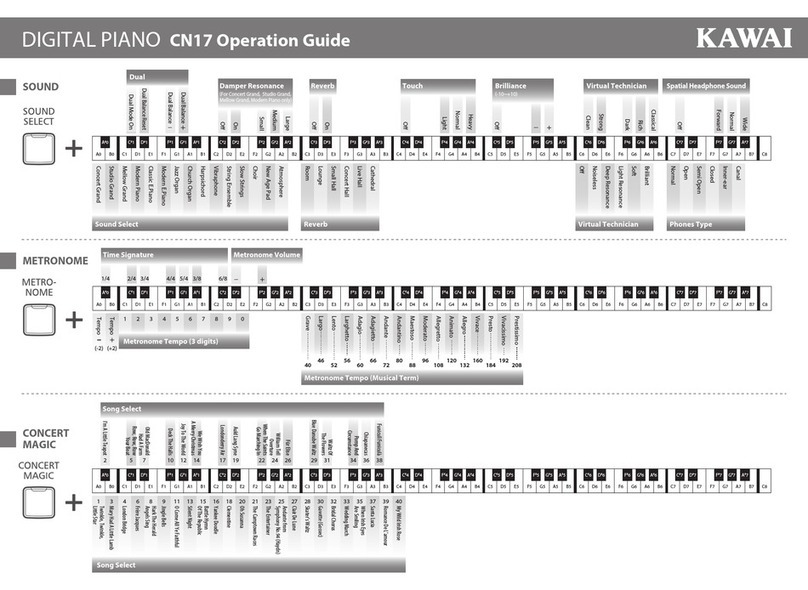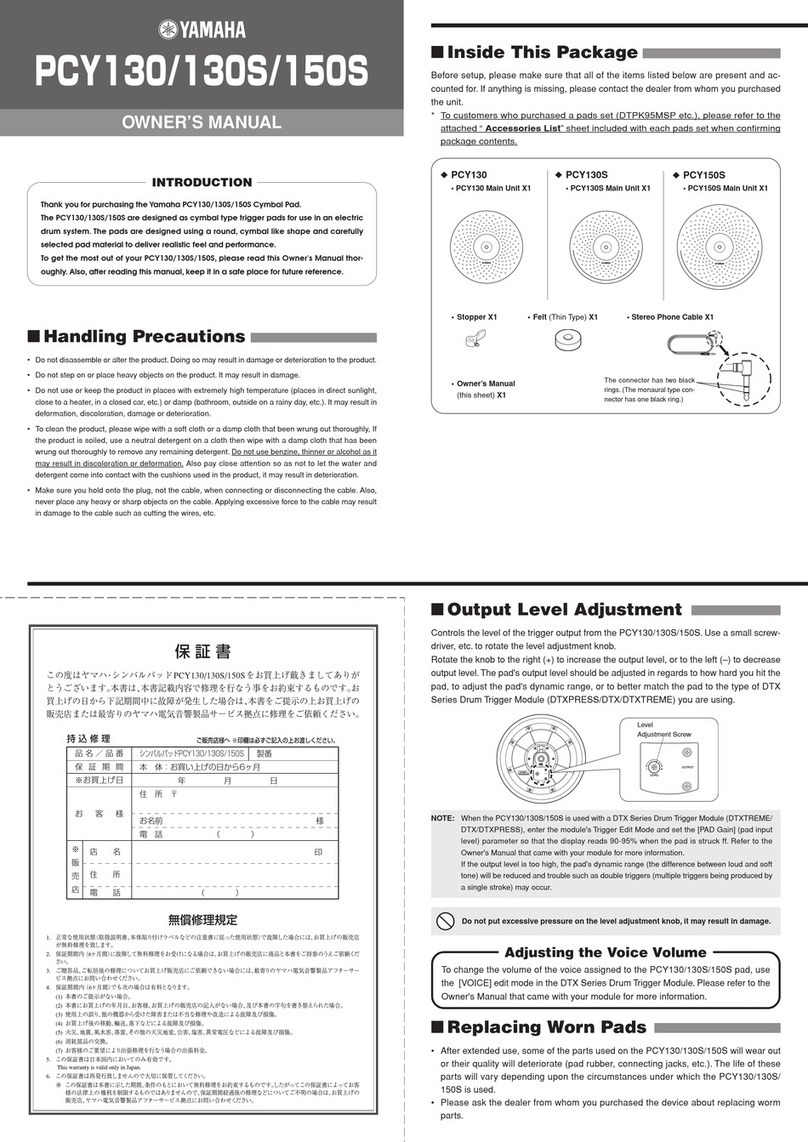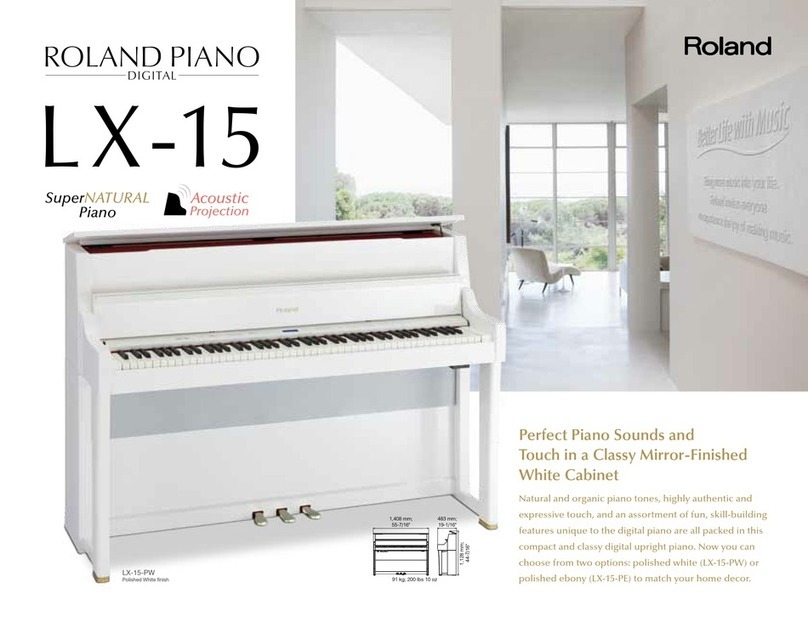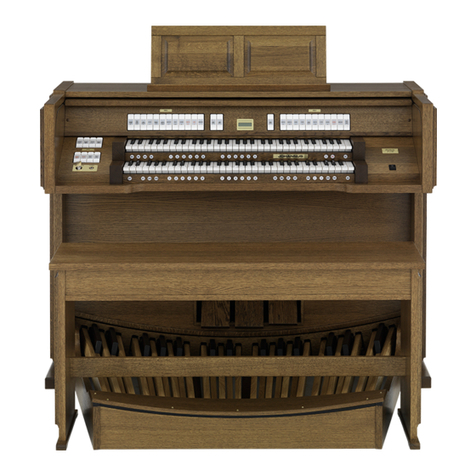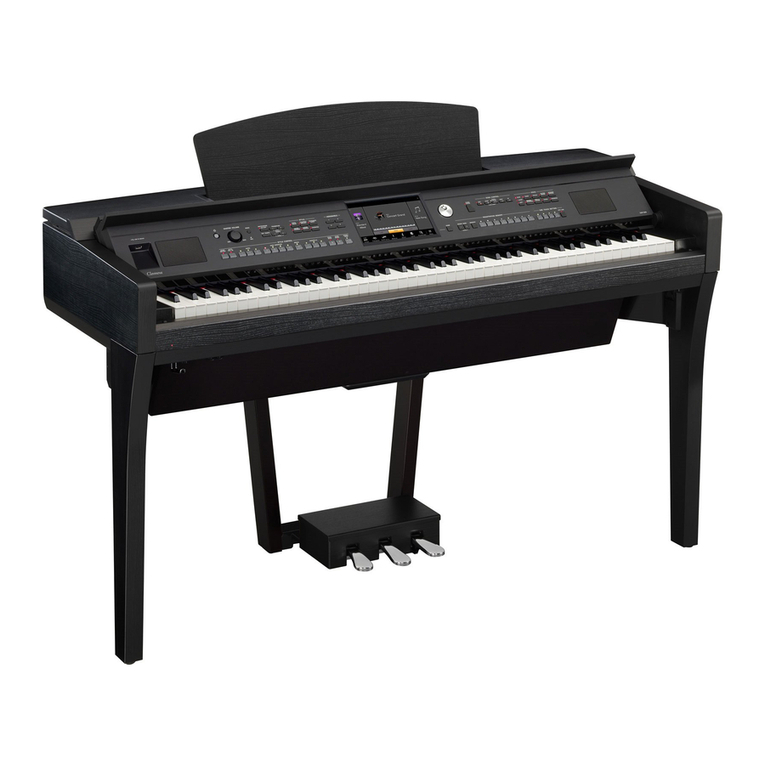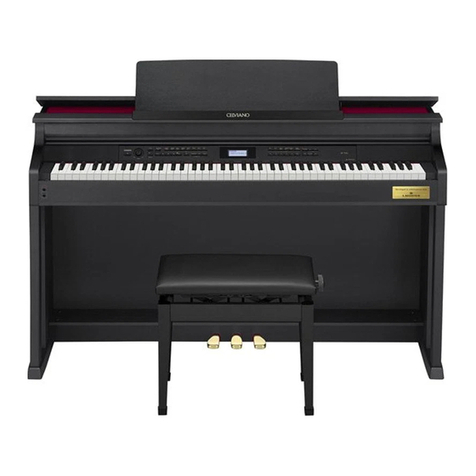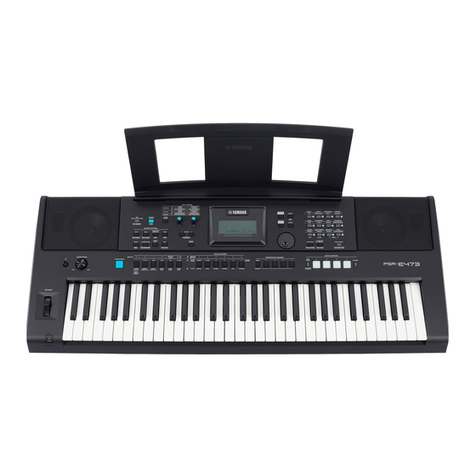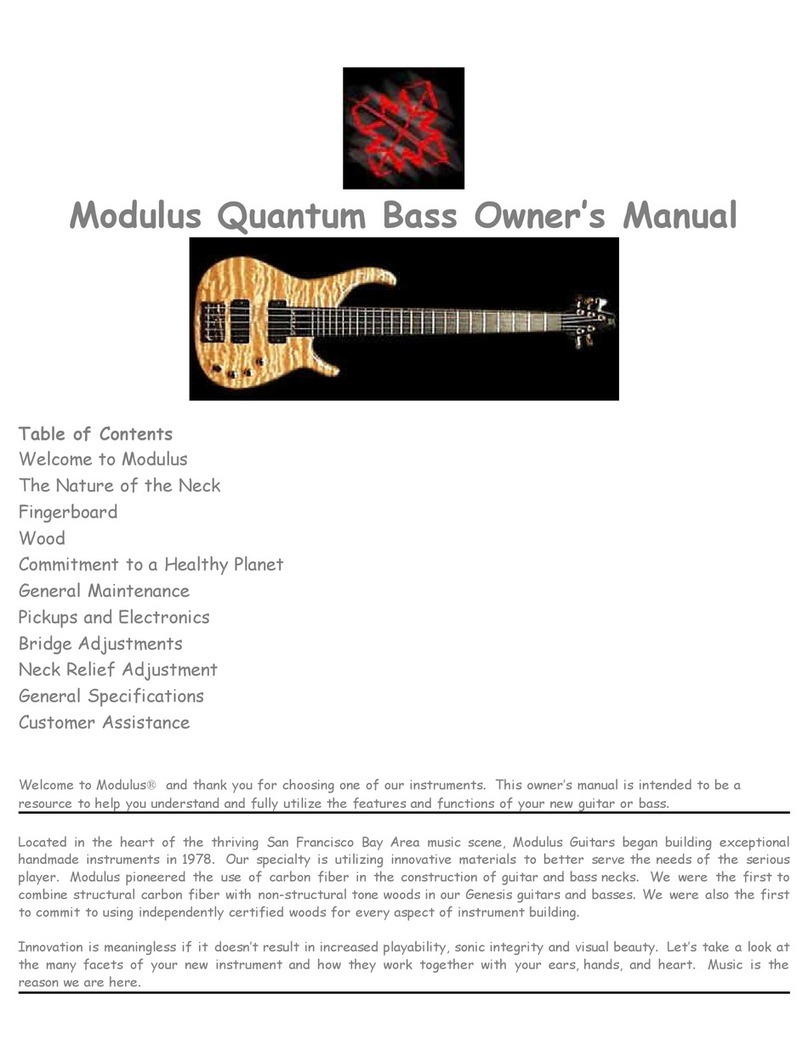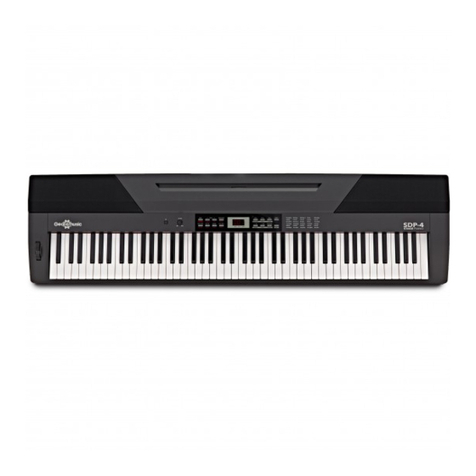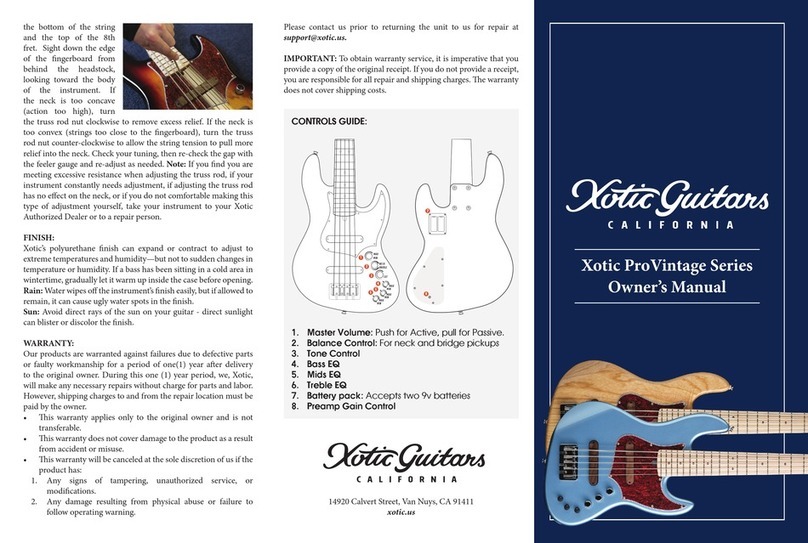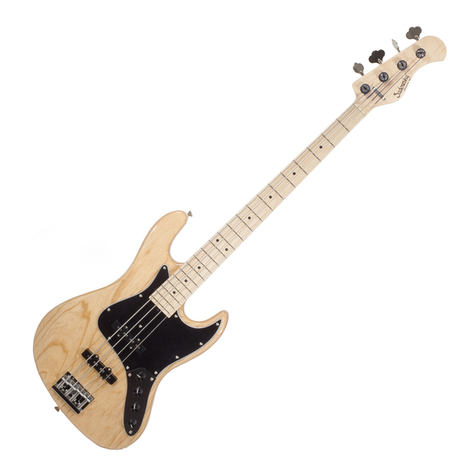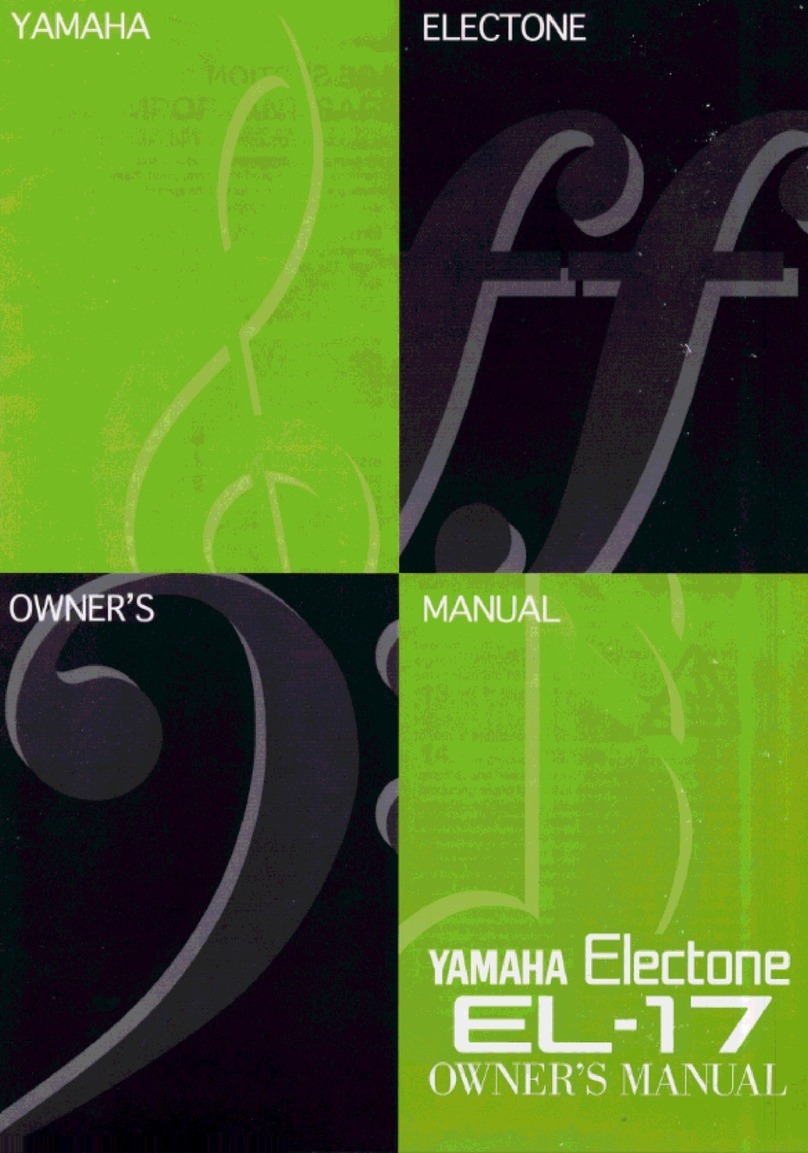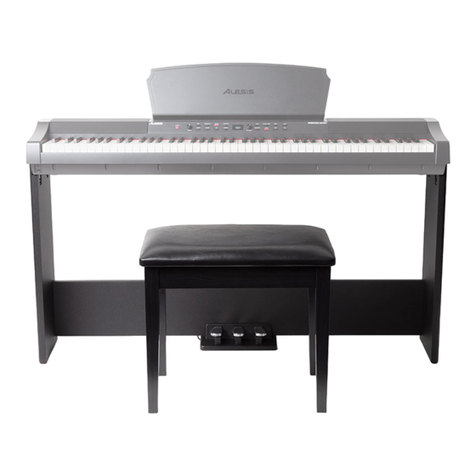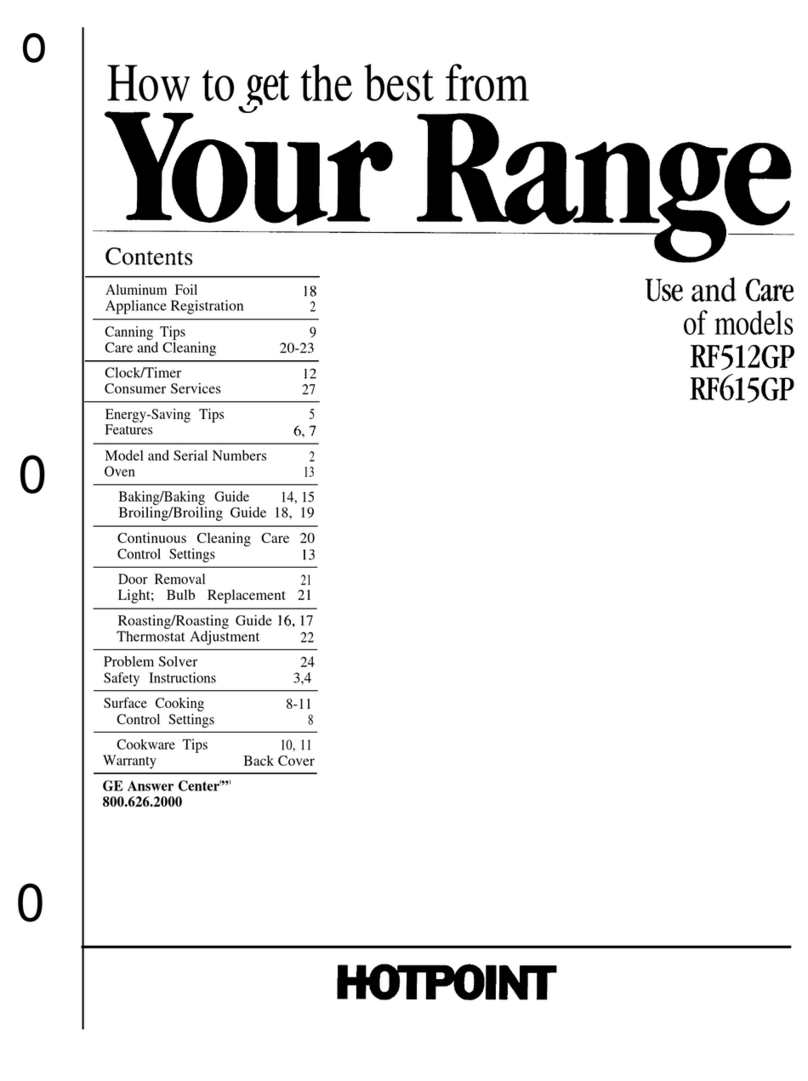
Wednesday, May 24, 2000 Rhodes Service Manual: Table of Contents Page: 2
file:///Macintosh%20HD/Desktop%20Folder/Fender%20Rhodes%20Manual%20%C4/toc.html
2-2 RHODES Damper Modules - Bass, Mid and Treble Configurations 2-3
2-3 RHODES Modular Action - Exploded View 2-4
3-1 RHODES Harp/Action Assembly - Exploded View 3-2
3-2 RHODES Stage Piano - Bottom View 3-3
3-3 RHODES Suitcase Piano Top - Bottom View 3-4
4-1 RHODES Modular Action - Single Key Depressed 4-1
4-2 Escapement Distances 4-1
4-3 Escapement Adjustment Locations 4-2
4-4 Adjustment Location 1 4-3
4-5 RHODES Damper Arm - Tension Adjustment 4-4
4-6 RHODES Damper Arm - Alignment Adjustment 4-4
4-7 RHODES Harp/Action Assembly 4-6
4-8 Timbre Adjustment Diagram 4-7
4-9 Volume Adjustment Diagram 4-7
5-1 RHODES Tone Bar Assembly 5-1
5-2 Harp Position for Tuning the RHODES 5-2
5-3 Typical Dial - Electronic Tuning Device 5-4
5-4 Stretch Tuning Chart 5-6
6-1 Tone Generator Assembly Removal/Replacement 6-2
6-2 Tine Cutting Measurement Chart 6-3
6-3 Felt Strip - Cutting Line Dimension 6-5
6-4 Key Pedestal - Pencil Line Dimension 6-6
6-5 Key Pedestal - 5/32" Felt Piece Mounted 6-6
6-6 Key Pedestal - Felt Modification Complete 6-7
6-7 Key Bushing Tightener 6-8
6-8 Key Identification Chart 6-10
7-1 RHODES First Stage Tone Bar Assembly 7-1
7-2 RHODES Second Stage Tone Bar Assembly 7-2
7-3 RHODES Third Stage Tone Bar Assembly 7-2
7-4 RHODES Original Tine Design 7-2
7-5 RHODES Second Stage Tine Design 7-3
7-6 RHODES Swaged Tine Design 7-3
8-1 RHODES Original Action Design 8-1
8-2 RHODES Second Stage Action Design 8-1
8-3 RHODES Third Stage Action Design 8-2
8-4 RHODES Fourth Stage Action Design 8-2
9-1 Tear Drop Hammer Head - Groove Removal 9-1
9-2 Tear Drop Hammer Head - Reshaping to Striking Line 9-1
9-3 RHODES Hammer - Shim Placement 9-3
9-4 Early Design Damper 9-3
9-5 Double-Shoulder Hammer Head 9-4
9-6 RHODES Early Design Harp/Action Assembly - Cut-Away View 9-5
10-1 RHODES Early Design Single Key View 10-1
10-2 RHODES Early Design Harp/Action Assembly - Exploded View 10-3
10-3 RHODES Original Pickup Coil Series/Parallel Arrangement 10-4
10-4 RHODES Modified Pickup Coil Series/Parallel Arrangement 10-4
10-5 RHODES Bus Wire Re-Routing Diagram 10-4
11-1 Schematic - Preamplifier Assembly - 100 Watt Suitcase and Janus I 11-2
11-2 Printed Circuit Board - Preamplifier Assembly - 100 Watt Suitcase and Janus I 11-3/11-4
11-3 Schematic - Dual 50 Watt Power Amplifier - 100 Watt Suitcase and Janus I 11-5
11-4 Schematic - Power Amplifier - Janus I 11-6
11-5 Printed Circuit Board - +/-15 Volt Regulator - 100 Watt Suitcase and Janus I Power Amplifier 11-7/11-8
11-6 Printed Circuit Board - 50 Watt Power Amplifier - Suitcase Piano 11-9/11-10
11-7 Printed Circuit Board - 50 Watt Power Amplifier - Janus I 11-11/11-12
11-8 Schematic - Preamplifier - 80 Watt Suitcase and Super Satellite 11-13
11-9 Schematic - Power Module - 80 Watt Suitcase 11-14
11-10 Schematic - Power Supply Regulator Assembly (Peterson Design) -80 Watt Suitcase 11-15
11-11 Circuit Board Assembly - Power Supply Regulator (Peterson Design) -80 Watt Suitcase 11-16
11-12 Schematic - Power Amplifier, Master and Slave - Super Satellite 11-17
11-13 Schematic - Power Control Panel, Master - Super Satellite 11-18
11-14 Schematic - Power Control Panel, Slave - Super Satellite 11-19
11-15 Schematic-Converter Kit I 11-20
11-16 Schematic - Converter Kit II 11-21
11-17 Schematic - Preamplifier and Power Amplifier (Jordan Design) -Suitcase Piano (Pre 1969) 11-22
11-18 Connection Diagram - All Printed Circuit Boards - Instructor Console 11-23
11-19 Schematic - Preamplifier and Power Amplifier - Student Piano (First Version - 1968) 11-24
11-20 Schematic - Preamplifier and Power Amplifier - Instructor Piano (First Version - 1968) 11-25


